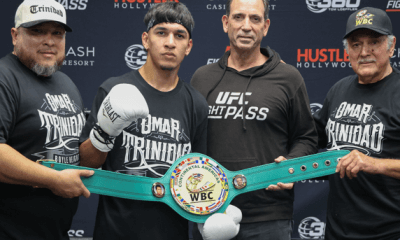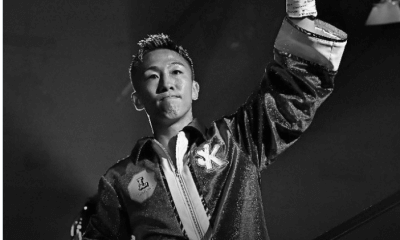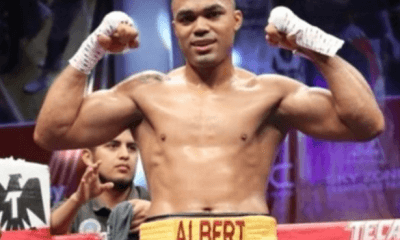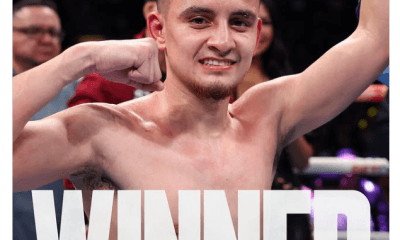Featured Articles
Canelo and the Boneyard
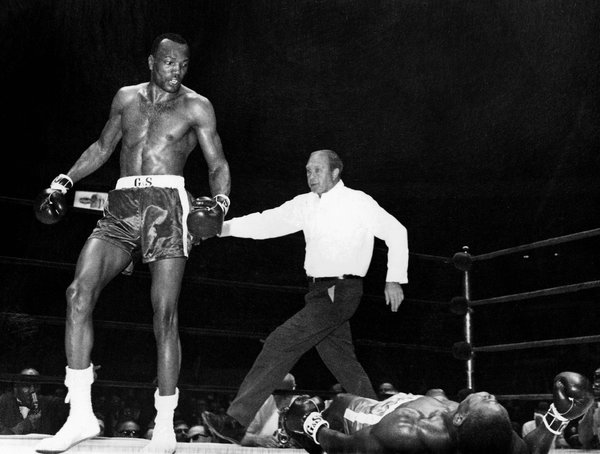
This weekend at the MGM Grand in Las Vegas, Saul “Canelo” Alvarez will attempt to heave his 5’8 frame from middleweight, where he reigns as the champion of the world, to the choppy waters of light-heavyweight where he is rendered a little man. His opponent is Sergey “Krusher” Kovalev, a top contender to the 175lb crown and a man in possession of a strap himself, a modern incarnation of the world champion.
As a championship leap, the most difficult for a physically mature fighter has historically been in the smallest divisions, but above lightweight the toughest may have proven to be the one Canelo has resolved to undertake this weekend. Light-heavyweight is a boneyard of capable middleweights who have jumped in the dark and suffered badly as a consequence. But history tells us that all is not lost for the Mexican; middleweight to light-heavyweight is fraught with danger but not without promise. Here we look at the 160lb champions who tried their hand, the failures, and rare successes, beginning back in 1955 at the New York Polo Grounds and Bobo Olson’s brave crack at the legendary Archie Moore.
Olson, like Canelo, ruled as the middleweight champion of the world when he stepped up and like Canelo he was targeting one of the most menacing puncher’s in the division’s history. A stiff rather than a serious puncher, Olson’s chances seemed to lie in his ability to scrap with the best middleweights the world had to offer on even terms, having succumbed just once to punches at 160lbs to the lethal fuselage wielded by the immortal Sugar Ray Robinson. Such was his plan. Moving to his left, Olson sought to round up Moore and jab him; the old champion measured Olson’s guns and found them wanting – then he trapped the smaller man (Olson was 5’10 and had a short reach) onto a gorgeous check right and tested him in a clinch. Uppercuts probed the sore spot and the awful truth was revealed – Olson couldn’t hold the Moore punch.
This is the most serious and practically difficult problem for any potential dual champion to overcome. Physics is not the friend of the smaller man. When we say “a light-heavyweight puncher trapped in a middleweight’s body” of someone like Gennady Golovkin we talk with reason. That said, an in-extremis puncher at middleweight is only a very good one at light-heavyweight, and a severe puncher at light-heavyweight will always hit harder than him – always. This is why Olson, who had survived numerous hitters at middleweight in the 1950s, found himself literally crawling on the floor behind Moore’s best shots later that same decade. And it broke him – Olson was never the same again.
The only middleweight to dent Olson before that fateful night was the aforementioned Robinson whose crack at the 175lb crown likely remains the most famous. The retelling of the story has the one-hundred-degree heat as the villain of the tale although Robinson himself fingered God almighty as the guilty party when he recovered in the dressing room. The conditions did play a part in Robinson’s desperate collapse that night, of that there can be no doubt, but as Maxim ruefully remarked, there was no air-conditioning unit in his corner – he did not collapse from the heat; why did the superior athlete succumb while Maxim did not?
Simply put, it was the bigger man’s physicality, another practical problem to overcome in wrestling a championship away from a naturally heavier opponent. Little remarked upon that night is the exhausted referee’s involvement. Maxim was warned for roughhousing, but Robinson, unthinkably, was spoken to by the referee for holding. This is the most graceful, fluid fighter in history and in his stab at the light-heavyweight title he was warned for holding. These interventions by the third man speak of the process.
As the bigger man, Maxim wants to induce exchanges, even against the electrifying Robinson. Maxim had calculated that his punches would be the heavier even against a nominee for the best puncher in history pound-for-pound. And he was indisputably right. The heat made this a nightmare for Robinson because it made box-moving so difficult for him. Inside he had to survive a vicious buffeting and mauling from Maxim, who drained him of energy and strength even as he lost rounds. So desperate did Robinson become to stem this tide that he resorted to holding – and eventually to quitting.
The physical pressure that the bigger man can bring to bear up close cannot be underestimated. The psychological pressure the bigger man can bring to bear in making prey of a retreating opponent exacts its own toll. Strength of character is as important as strength of body and in confronting a much bigger man the failure of either is terminal whatever the scorecards say at the moment of disaster. Canelo must make these discomfitures his ally in pressing him to work rather than hold, step rather than run.
It is a dual battlefront for the Mexican. He must avoid exchanges with a powerful puncher – he must avoid the inside where a hunted fighter might traditionally rest. A man doesn’t come by the name of Krusher by playing pattycake, nor by acting the choirboy in the pocket.
There is good news in for Canelo in the form of Dick Tiger, however. Like Canelo, Tiger stood five feet eight inches; like Canelo he sported a reach of around seventy inches. Like Canelo, he, in 1966, stepped up from middleweight to take on the reigning light-heavyweight champion Jose Torres. Torres was shorter than Kovalev but his reach was longer and like the Russian he was a respected technician.
There is more. Like Canelo, Tiger made a fight out of slipping the jab, and like Canelo, he deployed a vicious body-attack, something the Mexican is almost certain to repeat against his bigger opponent. Tiger’s edge though was his innate toughness. Perhaps no fighter had more fight-discipline or intestinal fortitude. He was rocked by Torres right hands in the fifth, but he never erred. Canelo has shown some of this discipline in his fights with Golovkin. The fight plan is the fight plan, but the pain is the pain and Canelo will have to take his lumps against Kovalev to be successful. This, Tiger did, matching his body-attack against the Torres right and coming out, barely, with a victory. It was a performance born of grit and bought by experience and courage and remained perhaps the finest display by a middleweight at 175lbs until Bernard Hopkins came to call decades later.
For now, I must mention a problematic postscript for Canelo in the telling of Dick Tiger’s tale. For all that Torres was a capable fighter who could swat, he held no darkening power. When a true puncher came hunting, Tiger, the great Biafran, was met with disaster, knocked unconscious by the terrifying Bob Foster (as shown in the picture).
Canelo would do well to heed Tiger’s post-fight remarks after his knockout at the hands of Foster: “I do not see anything. I do not hear anything. Everything is all quiet, and it is dark. There is no pain, there is no sound. I did not know I was on the floor. Was I on the floor?”
These are dark and dangerous waters for a middleweight, even an iron-chinned one.
Does Canelo truly have an iron chin? Does Kovalev still wield that darkening power? Could Canelo turn hunter in the manner of that other famous weight-hopping redhead, Bob Fitzsimmons? Time, as always, will tell.
Check out more boxing news on video at The Boxing Channel
To comment on this story in The Fight Forum CLICK HERE
-

 Featured Articles3 weeks ago
Featured Articles3 weeks agoThe Hauser Report: Zayas-Garcia, Pacquiao, Usyk, and the NYSAC
-
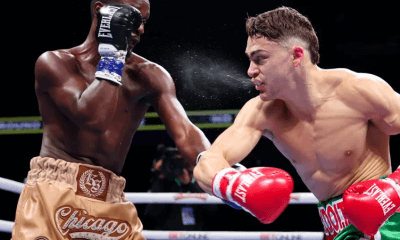
 Featured Articles2 weeks ago
Featured Articles2 weeks agoOscar Duarte and Regis Prograis Prevail on an Action-Packed Fight Card in Chicago
-
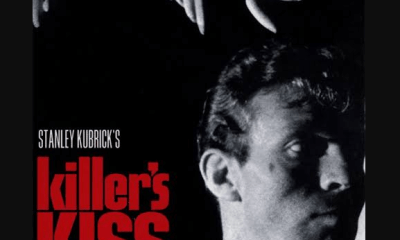
 Featured Articles1 week ago
Featured Articles1 week agoThe Hauser Report: Cinematic and Literary Notes
-
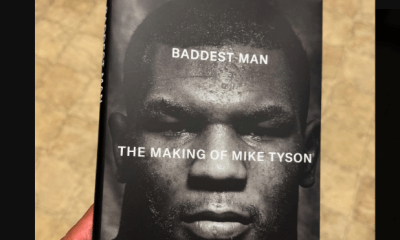
 Book Review4 days ago
Book Review4 days agoMark Kriegel’s New Book About Mike Tyson is a Must-Read
-
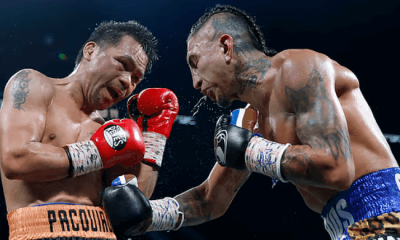
 Featured Articles4 weeks ago
Featured Articles4 weeks agoManny Pacquiao and Mario Barrios Fight to a Draw; Fundora stops Tim Tszyu
-
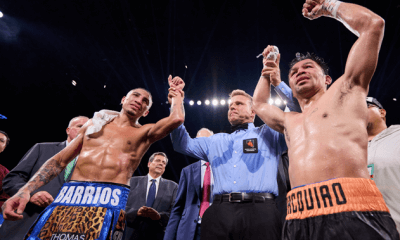
 Featured Articles4 weeks ago
Featured Articles4 weeks agoArne’s Almanac: Pacquiao-Barrios Redux
-

 Featured Articles3 weeks ago
Featured Articles3 weeks agoRemembering Dwight Muhammad Qawi (1953-2025) and his Triumphant Return to Prison
-
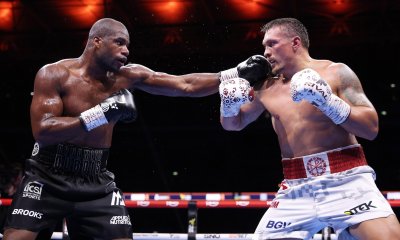
 Featured Articles4 weeks ago
Featured Articles4 weeks agoOleksandr Usyk Continues to Amaze; KOs Daniel Dubois in 5 One-Sided Rounds


